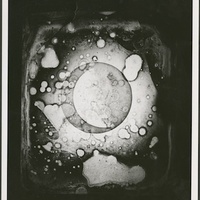Solé, I.; Miras, M.; Castells, N.; Espino, S.; Minguela, M. (2013). Integrating information: an analysis of the processes involved and the products generated in a written synthesis task. Written Communication, 30, 63-90.
The case study reported here explores the processes involved in producing a written synthesis of ... more The case study reported here explores the processes involved in producing a written synthesis of three history texts and their possible relation to the characteristics of the texts produced and the degree of comprehension achieved following the task. The processes carried out by 10 final-year compulsory education students (15 and 16 years old) to produce their syntheses, including the integrations they verbalized while performing the task, were examined in detail with a double-analysis system. The results revealed a tendency for the students who engaged in more elaborative patterns to make more integrations and produce better texts. These students seemed to benefit more from the task in terms of comprehension. Conversely, the students who followed a more reproductive pattern by and large copied ideas from the source texts and achieved low levels of comprehension.











Uploads
Books by Sandra Espino
The participants were 161 undergraduates –females and males- in Psychology. All of them were asked to read three texts about intelligence, and to answer a prior knowledge questionnaire –before reading- and a
comprehension test –after reading-. The experiment was designed based on two different conditions: task (reading/reading&synthesis) and media (performing the task on paper or computer). Three ANOVAs were
conducted with task and media as independent variables and global, superficial and deep comprehension as dependent variables. No significant differences were found between tasks. Significant differences were found on deep comprehension for media condition in favor of the students who did the task on paper.
aider les étudiants de psychologie et pédagogie à réaliser
des entretiens d’intervention (counselling interviews). Onze
groupes d’étudiants ont écrit des entretiens d’intervention à
partir de la théorie et d’un guide qui l’accompagnait avec
quelques exemples. On a évalué à quel degré les étudiants
considéraient les phases de l’entretien ; si les questions
étaient théoriquement fondées ; et, enfin, si des formules
linguistiques spécifiques étaient utilisées.
The theoretical approach adopted is naturalistic, observational, descriptive and contextual. The empirical basis for the work is provided by a detailed analysis of the representations held and the note-taking procedures employed by the students, and the actual use they make of their note-taking in carrying out a specific academic task, together with an examination of the teaching and learning context in which all this occurs.
The results obtained revealed certain trends regarding the relationship between the students’ learning approach, their note-taking procedures and the use they made of their notes. In particular, it was found that, in general, students with a deep approach tended to note the information literally but incompletely, mostly on the basis of the visual information presented by the teacher, whereas students with a superficial approach employed different note-taking procedures. In addition, students with a deep approach tended to paraphrase the information in their notes before including it in the written product required of them in the situation under study to a greater extent than those with a superficial approach, and performed compliance-checks to ensure that their written products were consistent with the contents of their notes. Lastly, it was found that certain students, in certain conditions depending on the characteristics of the teaching and learning context, modified their learning approach and engaged in behaviours more in keeping with a different approach from the one initially identified.
Papers by Sandra Espino
las operaciones cognitivas y metacognitivas utilizadas por los estudiantes de los diferentes niveles educativos estudiados. No se aprecian diferencias significativas entre los niveles educativos en cuanto a la calidad del resumen, ni entre ésta y los procedimientos y las operaciones cognitivas y metacognitivas utilizadas."
En este estudio participaron 55 estudiantes de 3er curso de Psicología de la Universidad de Barcelona. Los datos fueron obtenidos a partir de un cuestionario elaborado ad hoc para explorar el tipo de representación de los estudiantes en relación a la toma de apuntes y su uso y de una prueba estandarizada (CEPEA. Barca, 1999) que permite determinar el enfoque de aprendizaje de los estudiantes. Los resultados ponen de manifiesto diferentes perfiles de representación de la toma de apuntes y su uso posterior (recogida de información vs. construcción del conocimiento). Del mismo modo, se observan también diferencias según el enfoque de aprendizaje. Por una parte, los estudiantes con un enfoque de aprendizaje profundo tienden a representarse la toma de apuntes como un instrumento o procedimiento de aprendizaje que permite la construcción del conocimiento y por la otra, estos estudiantes se representan realizando un uso más elaborado de sus apuntes que los estudiantes con un enfoque de aprendizaje superficial, incluyendo actividades de escritura como hacer resúmenes, ampliar el contenido de los apuntes con otras fuentes de información o realizar esquemas o mapas conceptuales a partir de los mismos."
The participants were 161 undergraduates –females and males- in Psychology. All of them were asked to read three texts about intelligence, and to answer a prior knowledge questionnaire –before reading- and a
comprehension test –after reading-. The experiment was designed based on two different conditions: task (reading/reading&synthesis) and media (performing the task on paper or computer). Three ANOVAs were
conducted with task and media as independent variables and global, superficial and deep comprehension as dependent variables. No significant differences were found between tasks. Significant differences were found on deep comprehension for media condition in favor of the students who did the task on paper.
aider les étudiants de psychologie et pédagogie à réaliser
des entretiens d’intervention (counselling interviews). Onze
groupes d’étudiants ont écrit des entretiens d’intervention à
partir de la théorie et d’un guide qui l’accompagnait avec
quelques exemples. On a évalué à quel degré les étudiants
considéraient les phases de l’entretien ; si les questions
étaient théoriquement fondées ; et, enfin, si des formules
linguistiques spécifiques étaient utilisées.
The theoretical approach adopted is naturalistic, observational, descriptive and contextual. The empirical basis for the work is provided by a detailed analysis of the representations held and the note-taking procedures employed by the students, and the actual use they make of their note-taking in carrying out a specific academic task, together with an examination of the teaching and learning context in which all this occurs.
The results obtained revealed certain trends regarding the relationship between the students’ learning approach, their note-taking procedures and the use they made of their notes. In particular, it was found that, in general, students with a deep approach tended to note the information literally but incompletely, mostly on the basis of the visual information presented by the teacher, whereas students with a superficial approach employed different note-taking procedures. In addition, students with a deep approach tended to paraphrase the information in their notes before including it in the written product required of them in the situation under study to a greater extent than those with a superficial approach, and performed compliance-checks to ensure that their written products were consistent with the contents of their notes. Lastly, it was found that certain students, in certain conditions depending on the characteristics of the teaching and learning context, modified their learning approach and engaged in behaviours more in keeping with a different approach from the one initially identified.
las operaciones cognitivas y metacognitivas utilizadas por los estudiantes de los diferentes niveles educativos estudiados. No se aprecian diferencias significativas entre los niveles educativos en cuanto a la calidad del resumen, ni entre ésta y los procedimientos y las operaciones cognitivas y metacognitivas utilizadas."
En este estudio participaron 55 estudiantes de 3er curso de Psicología de la Universidad de Barcelona. Los datos fueron obtenidos a partir de un cuestionario elaborado ad hoc para explorar el tipo de representación de los estudiantes en relación a la toma de apuntes y su uso y de una prueba estandarizada (CEPEA. Barca, 1999) que permite determinar el enfoque de aprendizaje de los estudiantes. Los resultados ponen de manifiesto diferentes perfiles de representación de la toma de apuntes y su uso posterior (recogida de información vs. construcción del conocimiento). Del mismo modo, se observan también diferencias según el enfoque de aprendizaje. Por una parte, los estudiantes con un enfoque de aprendizaje profundo tienden a representarse la toma de apuntes como un instrumento o procedimiento de aprendizaje que permite la construcción del conocimiento y por la otra, estos estudiantes se representan realizando un uso más elaborado de sus apuntes que los estudiantes con un enfoque de aprendizaje superficial, incluyendo actividades de escritura como hacer resúmenes, ampliar el contenido de los apuntes con otras fuentes de información o realizar esquemas o mapas conceptuales a partir de los mismos."